Co-authored by Nick Schonfeld.
Making do with what you have. An age-old idiom that rings true in many parts of the world. But what if you have nothing to make do with? When the situation is so dire, so absurdly extreme, that traditional entities; government, the economy or foreign aid, are no longer able to solve it.
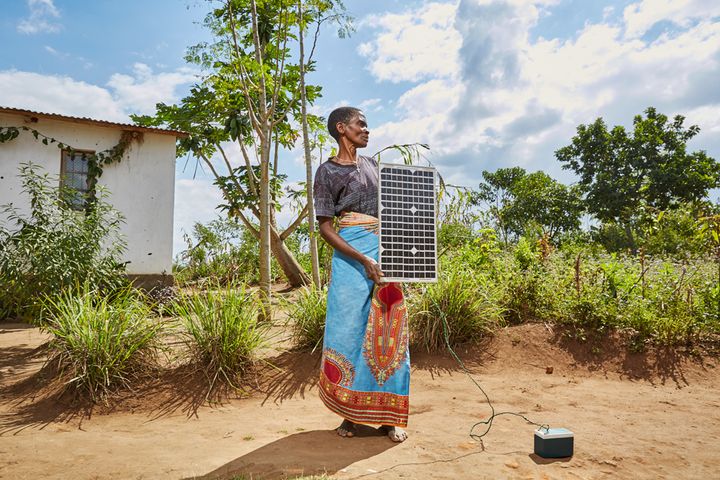
Violet Napazi, 57, holds up the solar panel owned by her son, Master, Luchenza, southern Malawi, 2017. Charging mobile phones is becoming a profitable business, especially since solar panels are becoming cheaper to buy and build. Until recently, Violet’s family used the solar panel to charge a battery which was then to used charge mobile phones. But since the inverter burnt out, it can only power one phone at a time.
In many areas, Malawi ranks low or among the lowest countries in the world (there are 195): life expectancy (165th), GDP (150th), investment (133rd), poverty (173rd), the list goes on. But Malawi’s current energy crisis eclipses everything. It is difficult to find an area not impacted by the lack of power in Malawi. Business, education, healthcare, transport, air travel, tourism. When the lights go out, everything is affected. Factories close, children cannot study, travel becomes dangerous.
According to a USAID report roughly 9% of the population are connected to the grid - in rural areas, this falls to between 1% and 5%. Malawi has an on-grid production capacity (power available on its national grid) of 351 megawatts (neighbors Zimbabwe and Zambia have 2,400MW and 2,650MW respectively), almost all of it from hydro or diesel power plants. Malawi imports or generates off-grid (solar panels or generators) a staggering 99.98% of its power, thanks to repeated spells of drought leading to historically low water levels of its main rivers, and chronic mismanagement, outdated infrastructure and underinvestment by the national provider ESCOM. And by the looks of it, things are only going to get worse. Provider ESCOM recently announced that unless Malawi receives abnormally high rainfall for 5 consecutive years, the situation will continue to deteriorate.
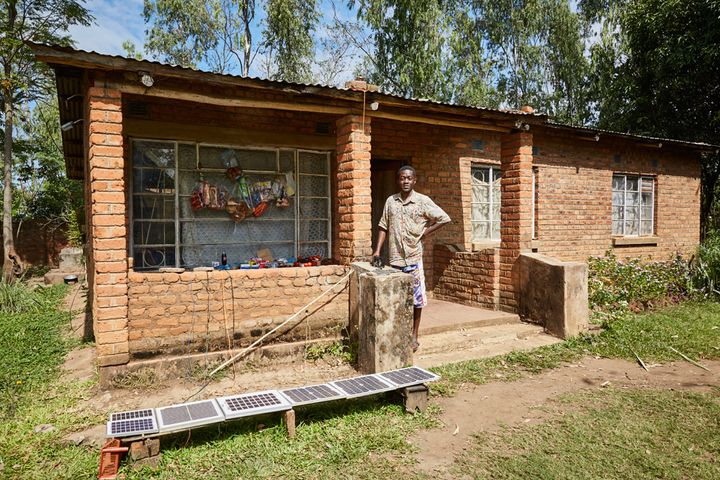
Felix Wonga (29) stands next to the small store he runs with his father, Robert (56), Luchenza, southern Malawi, 2017. Felix runs the mobile phone charging business, while his father takes care of the shop front. The solar panels laid out in front of the store power a car battery which, Felix uses to charge up to five mobile phones at once. Because Felix and Robert’s home is the only one in the area with solar panels, business is good.

Felix Wonga (29) waits for the sun to appear from behind a cloud, Luchenza, southern Malawi, 2017. Customers pay up to 50 Kwatcha (7 cents) to charge their phones using the electricity generated by Felix’s solar panels. Felix is saving to buy a set of bigger panels that provide enough power to ensure a continuous supply of electricity. With his current panels, if the sun is blocked by a cloud, the power stops.
![Robert Wonga (56), and his son Felix (29) stand in the living room of their home, Luchenza, southern Malawi, 2017. The solar panels that Felix uses for his mobile phone charging business also powers their lights, and several small radio’s and speakers. Felix: “We are the only ones in this area that have a charging business. If more people in this area had solar panels it would very much improve their lives. ESCOM [the national provider], is too expensive and not reliable.”](https://img.huffingtonpost.com/asset/59b2cbd71700002600f5200f.jpg?ops=scalefit_720_noupscale)
Robert Wonga (56), and his son Felix (29) stand in the living room of their home, Luchenza, southern Malawi, 2017. The solar panels that Felix uses for his mobile phone charging business also powers their lights, and several small radio’s and speakers. Felix: “We are the only ones in this area that have a charging business. If more people in this area had solar panels it would very much improve their lives. ESCOM [the national provider], is too expensive and not reliable.”
For the few that can afford them, generators provide power during the countries 63-70 days of blackouts. But for most in Malawians, access to the severely limited amount of available electricity remains a distant dream. Not surprisingly perhaps, many people we spoke to had no desire to ever be linked to the national grid due to its unreliability and lack of infrastructure, let alone pay the high connection fees.
All this means that Malawians have had to look to other sources of energy for their power. Grassroots efforts to generate electricity locally, through solar, wind, and biogas are springing up everywhere, and, international aid efforts aside, these local projects are beginning to make a tangible difference. Which is not difficult if the electricity bar is as low as it is in Malawi. Green Malata, for example, the entrepreneurial training village that Nick and I visited earlier this year, now teaches its students how to make their own solar panels, working with biogas, and operating wind turbines. It also rents out solar batteries and is installing basic biogas facilities in surrounding villages.
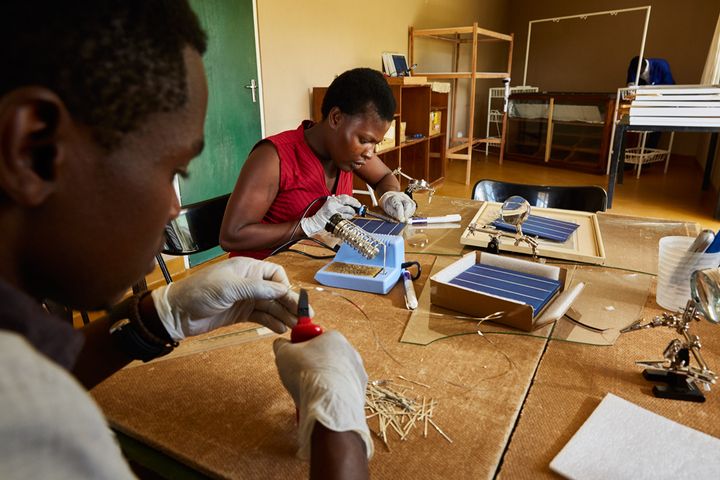
Alex and Jennifer, students at Green Malata, learn how to assemble solar panels, Luchenza, southern Malawi, 2017. Green Malata teaches a variety of renewable energy skills, including solar panel building and maintenance, biogas generation, and wind turbines. As solar panel technology becomes cheaper and easier to use, training villages like Green Malata can afford to not only use them as part of their curriculum, but also to sell and rent them out to local villagers, providing much needed extra income.
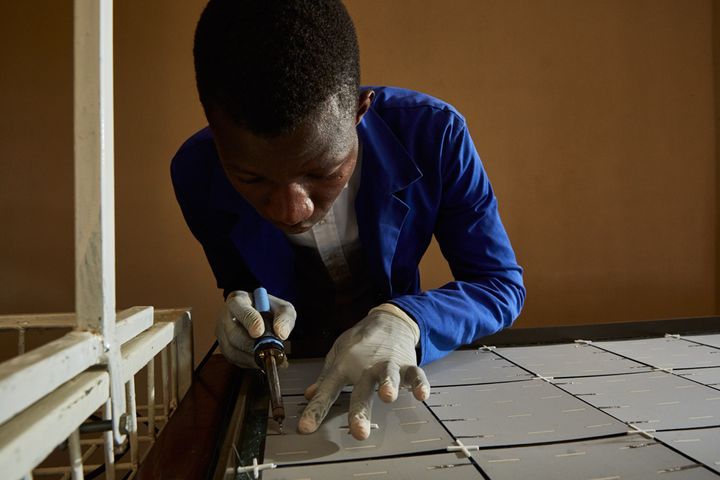
Thomas, a student at Green Malata, an entrepreneurial village, carefully solders metal strips to the back of a solar panel, Luchenza, southern Malawi, 2017. Thomas and his fellow students are part of Green Malata’s Renewable Energy course, during which they learn about a range of different green alternatives to on-grid electricity generation.
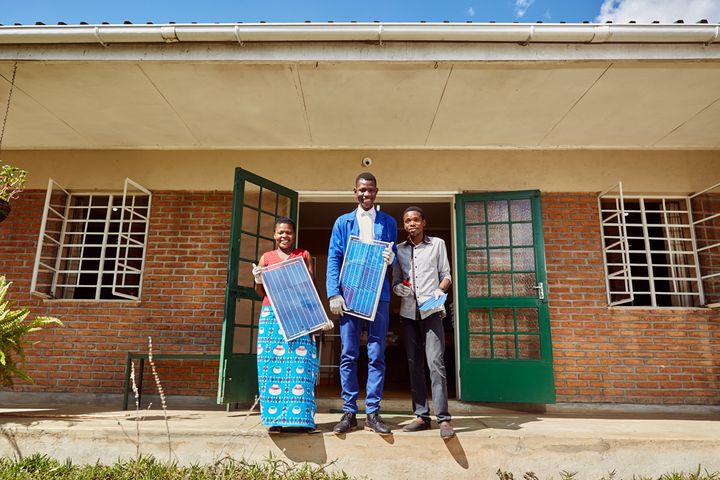
From left to right: Jennifer, Thomas, and Alex, students at Green Malata, an entrepreneurial village, pose with some of their solar panels, Luchenza, southern Malawi, 2017.
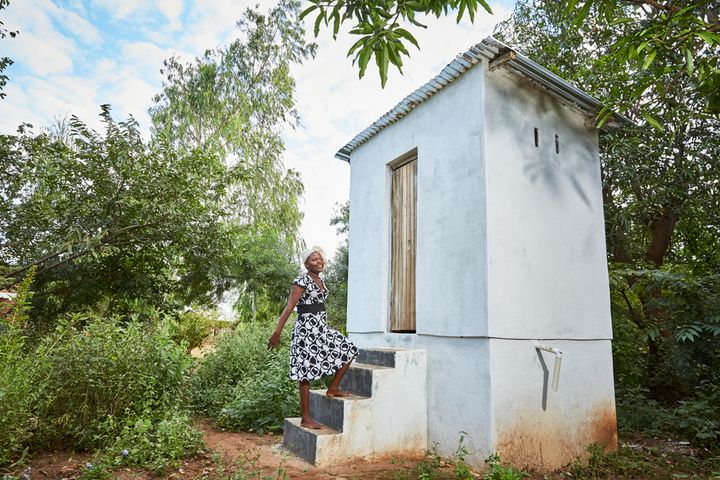
Jennifer stands on the steps of her eco-toilet, next to her house, Luchenza, southern Malawi, 2017. The Children’s Fund of Malawi, the charity that runs Green Malata, has also installed eco-toilets next to the houses of several of its students. Waste is collected in the bottom of the toilets, and is later added to a biogas facility which now provides all the power for the entrepreneurial training village where she studies how to make solar panels.
It’s amazing to see how a few light bulbs can positively impact the lives of those who can now read, study or cook under them. What’s more, a steady supply of affordable and reliable power has huge implications for the future of Malawi. The ability to study after dark leads to a better educated generation of Malawians, entrepreneurs can run their business for longer and factories don’t lose out on productivity, meaning they can employ more people and pay better wages.
To cut a long post short, a little power can go a long way in Malawi; a country where making do means redefining what it is to have.
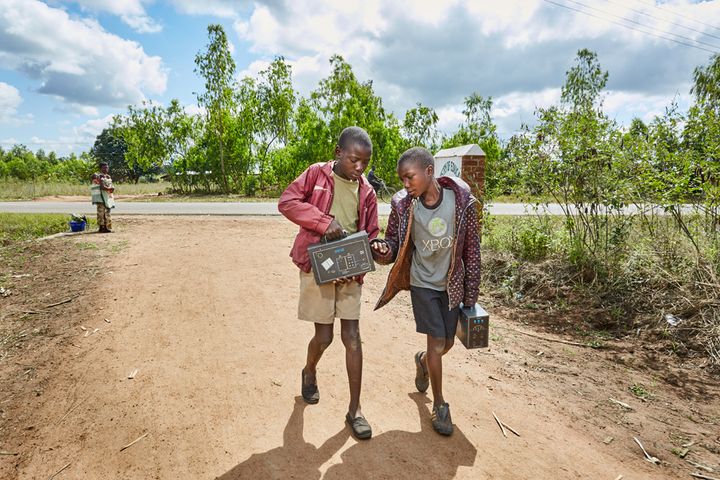
From left to right: Jan Chumba (12) and his brother Ben (10) carry two solar batteries home, after picking them up at Green Malata, an entrepreneurial training village that offers a variety of green alternatives to Malawi’s notoriously unreliable national electricity provider, ESCOM, Luchenza, southern Malawi, 2017.
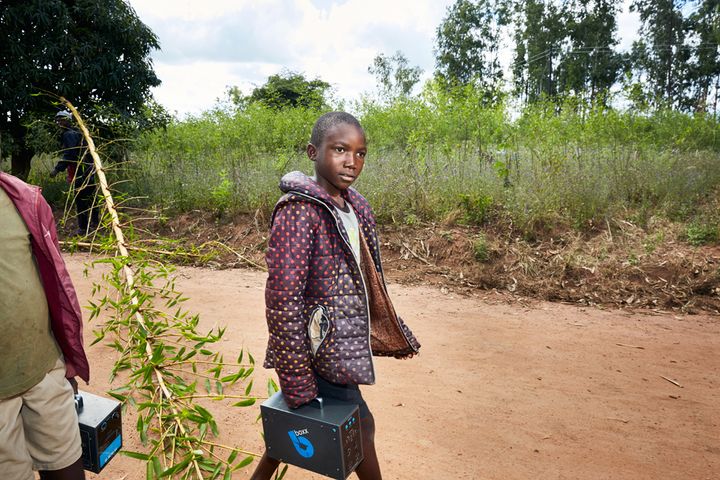
Jan Chumba (12) and his brother Ben (10) carry two solar batteries home, after picking them up at Green Malata, an entrepreneurial training village, Luchenza, southern Malawi, 2017. The batteries come in a variety of sizes. The one pictured here costs 2,500 Kwatcha ($3,40) to rent per month, and an additional 1,250 Kwatcha ($1,70) to charge. This particular battery can charge phones, power 5 light bulbs, a radio, fan, and television for up to 4 days.
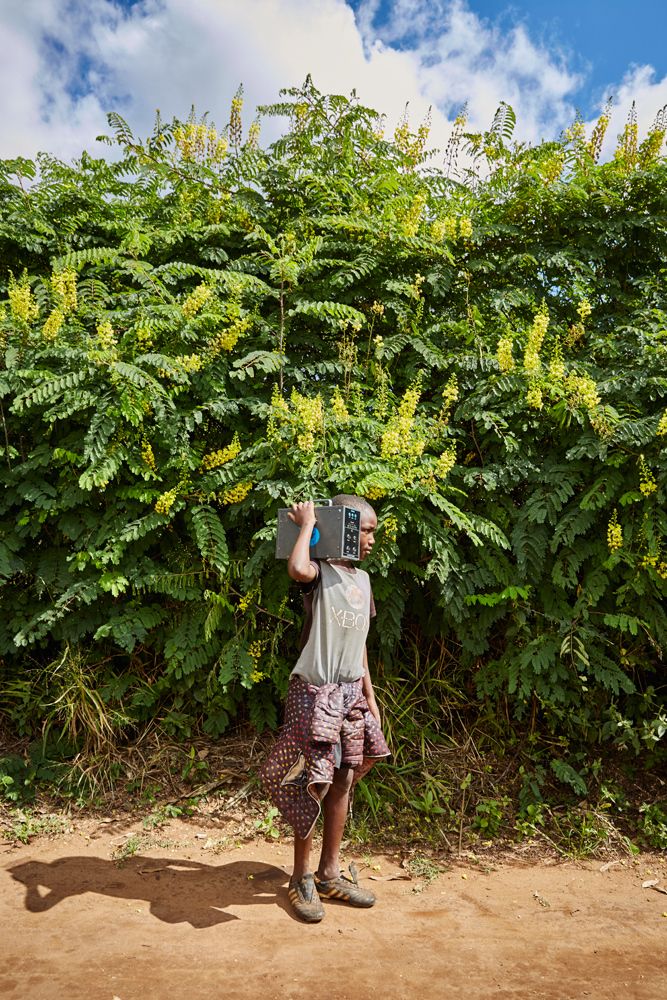
Ben Chumba (10) carries a solar battery home, Chiuta village, southern Malawi, 2017. He and his brother return an empty battery and change it for a new one every four days, depending on how much electricity the family uses.
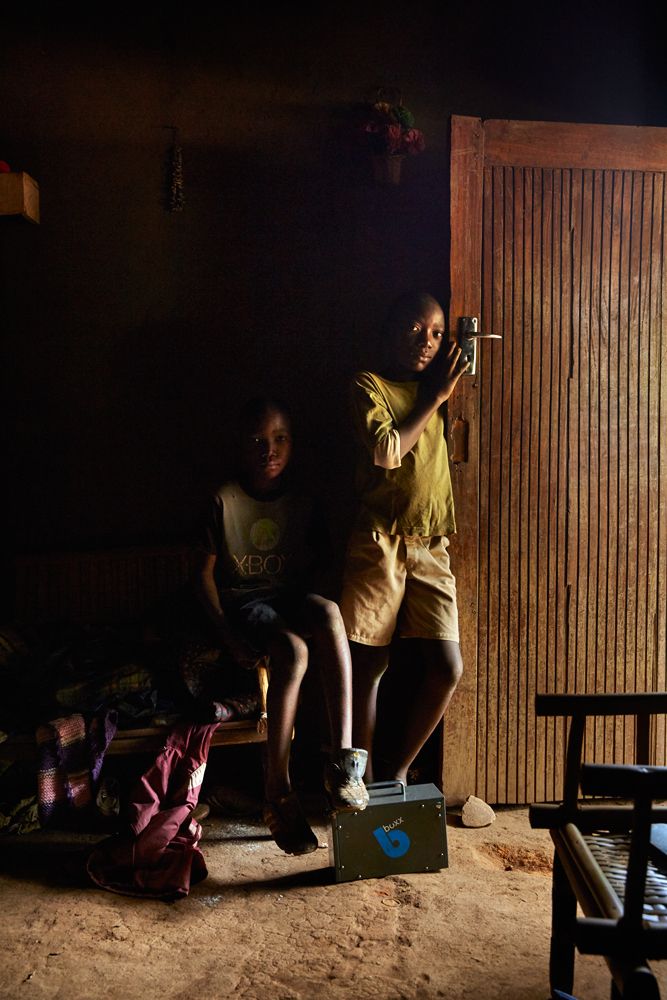
Jan Chumba (12) and his brother Ben (10) in the doorway of their home, Chiuta village, southern Malawi, 2017. During the day, the only light inside comes from the open door and windows.
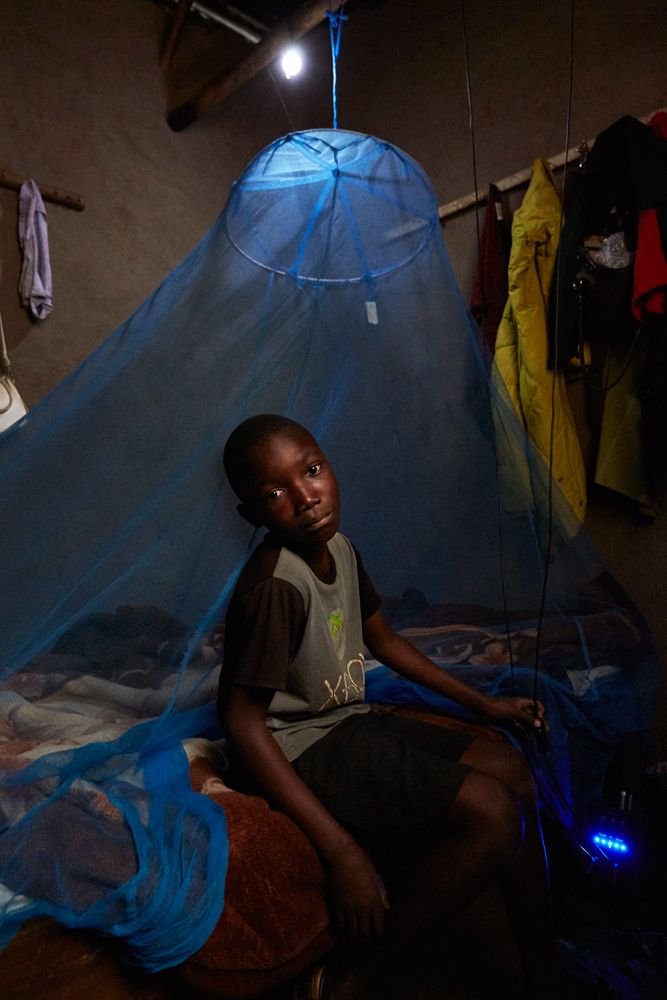
Ben Chumba (10) sits on his bed, lit by a light bulb which is powered by a solar battery, visible in the bottom right hand corner of the image, Chuita village, southern Malawi, 2017.

Jan Chumba (12) and his brother Ben (10) study using the light from a solar battery powered light bulb, Chiuta village, southern Malawi, 2017. Before the arrival of the solar batteries, the family used paraffin lamps after nightfall. These lamps were far more expensive and posed a fire hazard. Now the boys can study while their mother uses the light to cook.
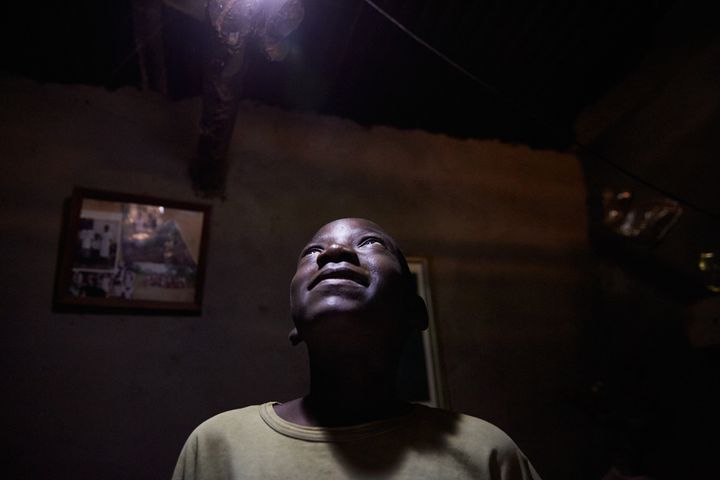
Jan Chumba (12) looks up at one of the light bulbs, Chiuta village, southern Malawi, 2017. Powered by a solar battery, the bulbs offer a safe and cheaper alternative to the more expensive and dangerous paraffin lamp, that Ben and his family used to use. Ben explains “We go to get a battery every 4 days. It is very heavy. We use the light to study and to light the rooms in our house. I like to study. Before the battery we were using paraffin and candles. We like solar much better. Because it provides more light.”
